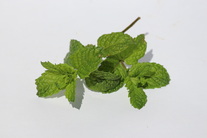Using food as medicine for colds and flu
As with almost everything in Chinese Medicine (CM), there isn't just one type of cold and flu.
Colds and flu come in many CM patterns, wind heat and wind cold being 2 of those forms. Below is a list of foods which Chinese Medicine believes can help the body fight back.
WIND- HEAT (coloured mucus/phlegm hard to move or thick, sore throat, dry itchy cough, body aches, fever or alternating fever/chills, dry mouth, sweating)
PEPPERMINT – cool and pungent. Analgesic, antibacterial, antiviral and anti-parasitic Cools and clears the eyes and head, vents rashes (eg. measles), soothes the throat and benefits cough, headache and mouth ulcers. Cooled leaves or teabags can be used on the skin or eyelids to benefit heat, itching and redness. Peppermint can be consumed in a tea.
LEMON/LIME – cooling, antiseptic and antimicrobial. Increases fluid production, destroys putrefying bacteria in the mouth and gut (so good for bad breath). Helps resolve mucus. Lemons/lime can be added to your tea or to warm/hot water.
CHRYSANTHEMUM – sweet, bitter, cool, antibacterial and antiseptic. These flowers help to clear the lungs and liver. Beneficial for fevers, headache, dizziness, sore eyes, sore throat and voice loss. Like peppermint cooled flowers can be used externally on eyelids and can also be used on sores and inflamed skin conditions. These flowers can be found dried at Asian supermarkets – small flowers are the best. Chrysanthemum flowers can be used in tea.
WIND –COLD (watery eyes, clear runny nose, sneezes, chills)
GINGER – warm and pungent, helps with aches, bronchitis, nausea and vomiting. Warms the body and transforms phlegm. Warms the lungs and stops cough. Helps break down high proteins such as meat and beans so beneficial for digestion. Ginger can be added to tea or warm/hot water.
CINNAMON- sweet, warm and pungent. Antibacterial and anti-fungal Warms the body, disperses cold by improving circulation. Clears thin mucus. Cinnamon can be added to porridge or soups.
SPRING ONIONS – pungent and bitter, anti-fungal and antimicrobial, used for chest pain and promotes sweating. It’s very good in early stages of cold, such as cooking the whites with chicken in chicken soup.
GARLIC – pungent, anti-fungal and antimicrobial. Promotes circulation and sweating. Eliminates worms, bacteria, yeasts, viruses and other micro organisms, eliminates toxins such as cadmium and lead. Fresh parsley eaten after garlic will help eliminate odour and also indigestion. Can take like a tablet with the common cold – ½ clove 2/3 times/day, or hold a clove between the teeth and cheek for 20 mins moving it around the mouth and doing this 3 times a day when symptoms first start.
ONION – warm and pungent, a traditional cough remedy is simmering onions in water until soft with honey added, then eating one onion every 4 hours. The juice or crushed onion in a pack can also be used externally on the chest for bronchial or chest congestion. Also lowers blood pressure and cholesterol.
Colds and flu come in many CM patterns, wind heat and wind cold being 2 of those forms. Below is a list of foods which Chinese Medicine believes can help the body fight back.
WIND- HEAT (coloured mucus/phlegm hard to move or thick, sore throat, dry itchy cough, body aches, fever or alternating fever/chills, dry mouth, sweating)
PEPPERMINT – cool and pungent. Analgesic, antibacterial, antiviral and anti-parasitic Cools and clears the eyes and head, vents rashes (eg. measles), soothes the throat and benefits cough, headache and mouth ulcers. Cooled leaves or teabags can be used on the skin or eyelids to benefit heat, itching and redness. Peppermint can be consumed in a tea.
LEMON/LIME – cooling, antiseptic and antimicrobial. Increases fluid production, destroys putrefying bacteria in the mouth and gut (so good for bad breath). Helps resolve mucus. Lemons/lime can be added to your tea or to warm/hot water.
CHRYSANTHEMUM – sweet, bitter, cool, antibacterial and antiseptic. These flowers help to clear the lungs and liver. Beneficial for fevers, headache, dizziness, sore eyes, sore throat and voice loss. Like peppermint cooled flowers can be used externally on eyelids and can also be used on sores and inflamed skin conditions. These flowers can be found dried at Asian supermarkets – small flowers are the best. Chrysanthemum flowers can be used in tea.
WIND –COLD (watery eyes, clear runny nose, sneezes, chills)
GINGER – warm and pungent, helps with aches, bronchitis, nausea and vomiting. Warms the body and transforms phlegm. Warms the lungs and stops cough. Helps break down high proteins such as meat and beans so beneficial for digestion. Ginger can be added to tea or warm/hot water.
CINNAMON- sweet, warm and pungent. Antibacterial and anti-fungal Warms the body, disperses cold by improving circulation. Clears thin mucus. Cinnamon can be added to porridge or soups.
SPRING ONIONS – pungent and bitter, anti-fungal and antimicrobial, used for chest pain and promotes sweating. It’s very good in early stages of cold, such as cooking the whites with chicken in chicken soup.
GARLIC – pungent, anti-fungal and antimicrobial. Promotes circulation and sweating. Eliminates worms, bacteria, yeasts, viruses and other micro organisms, eliminates toxins such as cadmium and lead. Fresh parsley eaten after garlic will help eliminate odour and also indigestion. Can take like a tablet with the common cold – ½ clove 2/3 times/day, or hold a clove between the teeth and cheek for 20 mins moving it around the mouth and doing this 3 times a day when symptoms first start.
ONION – warm and pungent, a traditional cough remedy is simmering onions in water until soft with honey added, then eating one onion every 4 hours. The juice or crushed onion in a pack can also be used externally on the chest for bronchial or chest congestion. Also lowers blood pressure and cholesterol.

